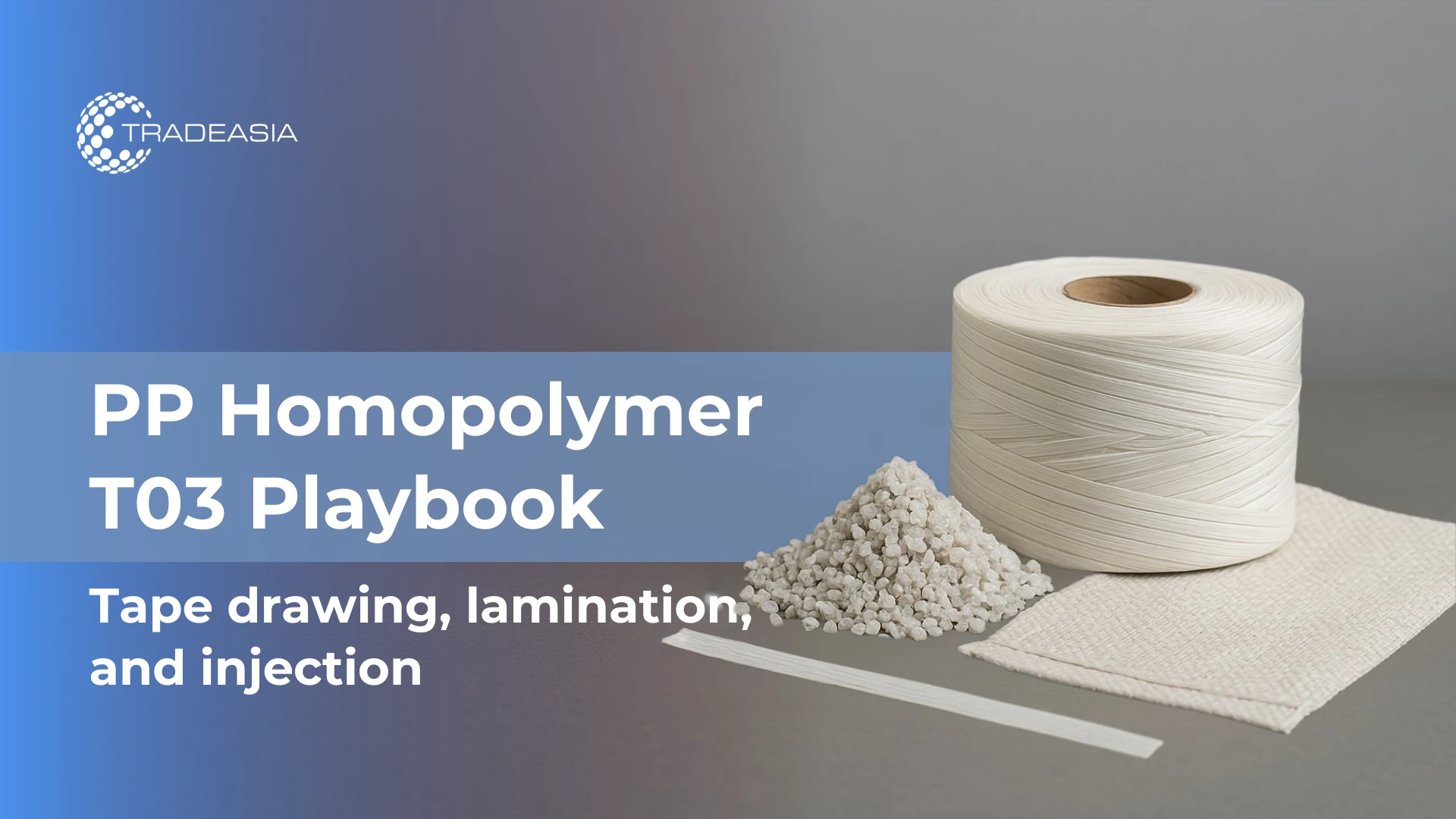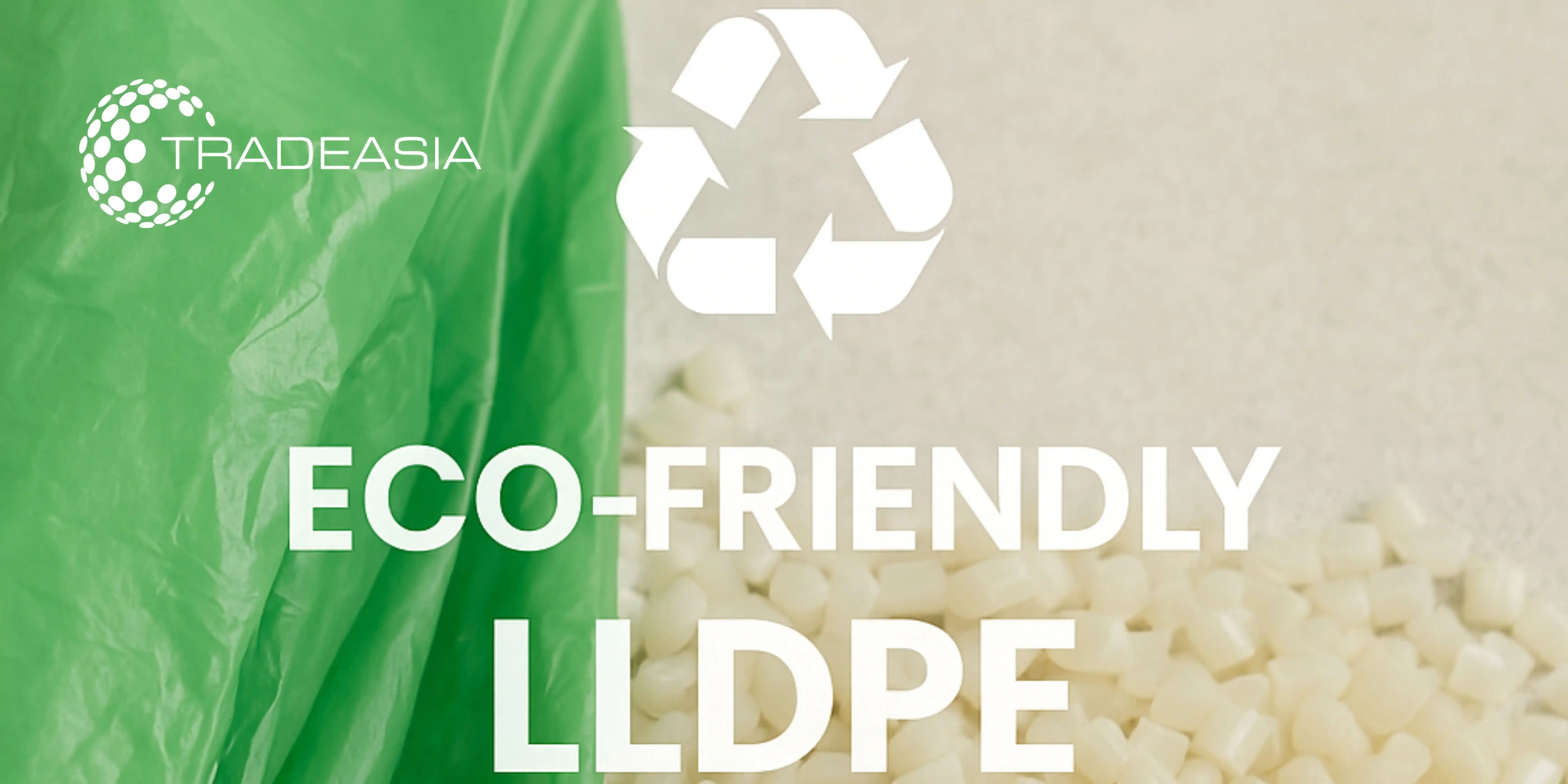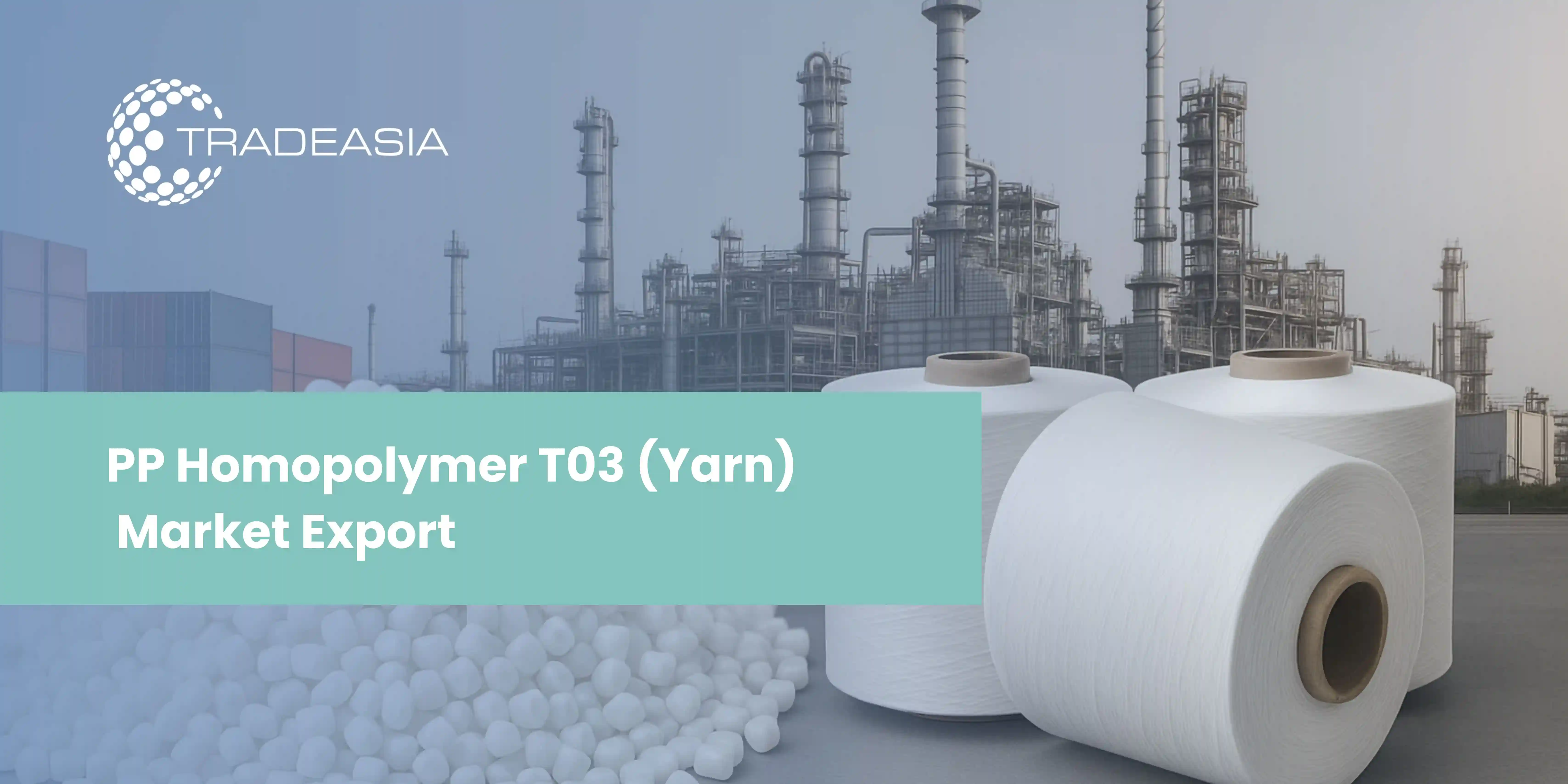PP Homopolymer T03—typically a mid-flow MFI ≈ 3 g/10 min (230 °C/2.16 kg)—is a workhorse grade for extrusion-tape (raffia), woven sacks, and selected light injection parts. This article explains how to convert PP T03 waste into consistent rPP streams, how to control melt flow and odor, and where recycled output fits commercially.
1. Where PP Homopolymer T03 Fits — and Why It Recycles Well
T03’s balance of stiffness and processability makes it ideal for tape drawing and woven fabrics, where orientation delivers high tenacity and tear resistance. For rPP, this mid-flow window is forgiving: blending virgin with recycled streams lets you fine-tune MFI back to spec without overshooting stiffness/impact. See Tradeasia’s PP portfolio structure and documentation flow on plastradeasia.com’s product section: PP Homopolymer or Download Center.
2. Collection → Sorting → Washing: Building a Clean rPP Feedstock
Collection & sorting. Prioritize post-industrial (startup scrap, edge trims, off-spec tape) and clean post-consumer woven streams. Maintain mono-polymer purity (avoid PE-rich liners and printed laminates where possible) to protect MFI and color.
Washing. For post-consumer, install hot-wash with industrial detergents and adequate friction. Clean flakes reduce gels and odor and stabilize re-extrusion. EPA’s Facts & Figures pages are useful to benchmark local collection and recycling realities and to support ESG disclosures. Environmental Protection Agency+1
Design for recycling. If your woven products include labels, inks, or barrier layers, align with RecyClass Design for Recycling Guidelines to avoid down-cycling and to improve yield. RecyClass+1
Explore other related products on our Polypropylene category.
3. Re-pelletizing & MFI Control: Hitting a Stable “T03” Window
Extrusion & filtration. Use a vented extruder with efficient degassing and a screen changer 80–120 mesh to capture fines, paper, and pigment. Stabilize with a primary/secondary AO package; add UV if products are outdoors.
MFI drift & blending. Expect MFI to rise after multiple heat histories. Two levers keep you in spec:
- Blend rPP with virgin T03 (common ranges 60:40 to 80:20).
- Apply controlled vis-breaking (if targeting higher-flow injection), then re-validate tensile/elongation for raffia.
Odor control. Use aggressive degassing, mineral/activated odor absorbers, and sensible temperature profiles. Train operators with a standard sniff protocol and keep records in the lot COA.
For marketing and audits, cite ISO 15270 as your overarching framework for plastics recovery and recycling governance; note that ISO is modernizing the series (including parts focused on chemical recycling and KPIs). ISO+3ISO+3ISO+3.
4. Converting rPP T03: Tape Drawing, Woven Lamination, and Light Injection
Extrusion-tape/raffia (starting window). Dry blend rPP pellets and additives; keep moisture <0.1%. Melt 220–240 °C; die 225–235 °C; water quench for a stable semicrystalline ribbon. Draw ratio 5–7× to reach target tenacity; anneal to minimize shrink and creep.
Woven sack & lamination. rPP woven fabrics accept PP coatings for moisture barrier and printability. When adding labels/inks, follow RecyClass protocols to maintain recyclability in PP rigid/flex streams (ink and adhesive choices matter). tool.recyclass.eu+1
Light injection. For crates or housings: melt 200–230 °C, mold 30–45 °C, sufficient holding to avoid sinks. If stiffness is short, consider talc 5–12% (validate impact). Keep regrind ratios stable batch-to-batch for color and mechanics.
5. Quality Gate, Compliance & Documentation
Routine QC for rPP T03: MFI, density, ash (filler), tensile/elongation (tape), impact (injection), APHA/L*a*b* color, odor. Keep instrument calibration logs and publish COA per lot.
Food contact. Use virgin or only rPP streams that satisfy your jurisdiction’s food-contact rules. When you need to justify recycled content in packaging, reference EPA’s national Facts & Figures and your own in-house mass-balance. Environmental Protection Agency
Governance & claims. Cite ISO 15270 in customer specs and supplier audits to show alignment with recognized frameworks for recycling and recovery; highlight internal SOPs derived from the evolving ISO 15270 parts (e.g., KPI-based process control). ISO+1.
6. Business Case: Where Recycled T03 Wins
Cost & carbon. rPP typically offers a lower embodied-carbon profile and competitive pricing when local feedstock and washing capacity are mature. Use conservative virgin:rPP blends to de-risk ramp-up while you accumulate performance data.
Market use-cases. rPP T03 fits rice/fertilizer/feed sacks, FIBC components, and non-critical injection. For ESG-driven packaging buyers, design mono-material woven products with DfR alignment and disclose verified % rPP—this can shorten sales cycles in tenders.




Leave a Comment